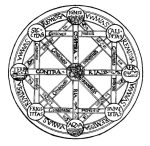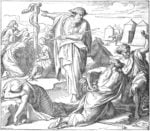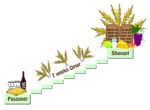Did G‑d Create Mathematics?
By Alexander Poltorak “G‑d is a mathematician”Carl Friedrich Gauss I. Can We Prove that G-d created Axioms of mathematics? 1. Introduction A reader challenged me with a
By Alexander Poltorak “G‑d is a mathematician”Carl Friedrich Gauss I. Can We Prove that G-d created Axioms of mathematics? 1. Introduction A reader challenged me with a

The parallels we have uncovered between the four elements, the letters of the Tetragrammaton, and the worlds of Seder Hishtalshelut suggest that the ancient sages
Abstract This essay explores the profound connections between language, philosophy, physics, and spirituality in the context of Rosh HaShanah. By examining the linguistic roots of

The least action principle is an expression of teleological reasoning where the initial states of the system are determined by the endpoints—the beginning and the

In the biblical story of the creation of Adam, the Torah states: Then the Eternal G‑d formed man of the dust of the ground, and

In the previous post “Physics of Tzimtzum I—The Quantum Leap”, we gave a general overview of the mystical doctrine of tzimtzum—the cornerstone of Lurianic Kabbalah.

Introduction “In the beginning G‑d created the heavens and the earth.” (Genesis 1:1) “In the beginning G‑d created the heavens and the earth,” the Torah

A Study in Form and Matter And Moses prayed for the people. And the Eternal said unto Moses: “Make thee a fiery serpent, and set it

There is a Biblical Commandment to count the days between the Passover and Shavuot, the “Feast of Weeks” (a.k.a. Pentecost). We start counting on the

Amicus est Socrates, magister meus, sed magis est amica veritas. “Socrates is my friend but a greater friend is truth” – Plato c. 428-348 BCE.

March 14 is celebrated by nerds around the world as the Pi Day. When written in digits, 3/14 represents first three digits of the number

The story of Joseph’s incarceration ends with his successful interpretation of the dreams of the Pharaoh’s chief butler and the chief baker. He ingeniously interpreted ordinary

In memory of my father, Abraham Shamshin ben Reuven, ע”ה For those of us who can’t get enough of Schrödinger cat, comes a new

…And behold, the thorn bush was burning with fire, but the thorn bush was not being consumed.” (Ex. 3:2) Every theologian worth his salt along